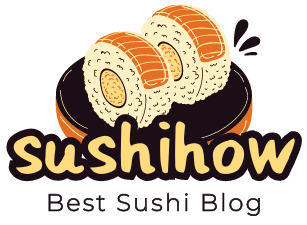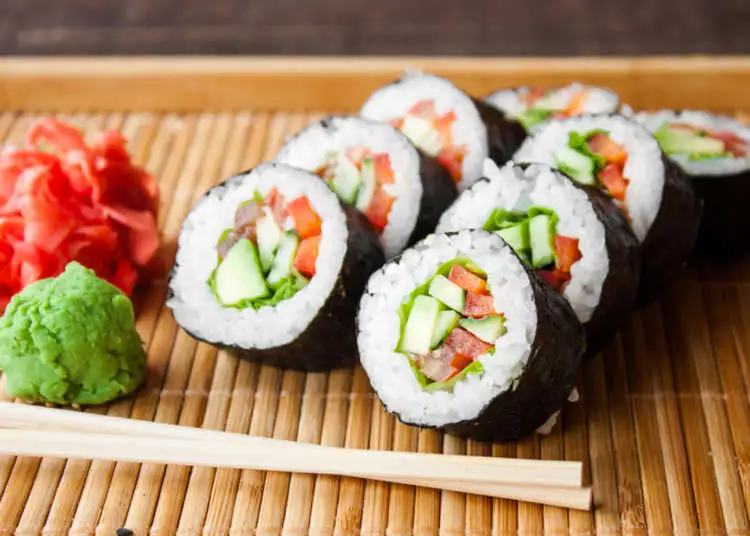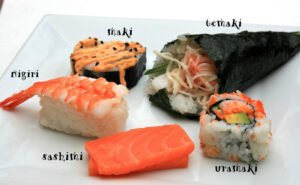Sushi is not just a meal; it’s an experience. With each bite, you savor the delicate flavors and textures that transport you to Japan. But have you ever considered how crucial presentation is to this culinary art? The way sushi is plated can elevate your dining experience from ordinary to extraordinary. It’s about more than just taste—it’s about creating a feast for the eyes as well.
Whether you’re hosting a dinner party or enjoying a quiet night in, the visual appeal of your sushi can transform any occasion into something special. Dive into the world of sushi presentation and discover how thoughtful plating can make your meal truly remarkable. From traditional methods steeped in history to modern techniques bursting with creativity, there are endless possibilities waiting for you. Let’s explore how to turn simple sushi rolls into artistic masterpieces on your plate!
The Importance of Presentation in Sushi
Presentation plays a vital role in sushi dining. It engages all the senses, inviting diners to appreciate not just the flavors but also the artistry involved.
Sushi is about balance—between taste, texture, and visual appeal. A well-presented dish can evoke feelings of excitement and anticipation. The colors of fresh fish against vibrant vegetables create a captivating tableau on your plate.
Moreover, presentation reflects cultural significance. Each element placed deliberately pays homage to traditional Japanese aesthetics, emphasizing simplicity and elegance. This attention to detail enhances appreciation for craftsmanship.
When you serve sushi beautifully arranged, it transforms into an experience rather than just a meal. Guests are more likely to savor each bite when they feel enchanted by what’s before them. In essence, the art of plating elevates sushi from mere food to a memorable culinary journey that resonates long after the last roll has been enjoyed.
Traditional vs. Modern Plating Techniques
Traditional sushi plating focuses on simplicity and elegance. Each piece is carefully arranged, emphasizing the natural beauty of the ingredients. Often, a wooden plate or bamboo mat is used to enhance authenticity. Minimal garnishes allow the colors and textures of sushi to shine.
In contrast, modern plating techniques embrace creativity and innovation. Chefs experiment with vibrant colors and eclectic designs. Plates may be shaped in unexpected ways or adorned with sauces that create visual flair.
Textures play a vital role too; crunchy toppings can elevate an otherwise simple dish into something extraordinary. The goal here is to surprise diners while still honoring traditional flavors.
This blend of old and new opens up endless possibilities for presentation, allowing chefs to express their unique styles while respecting sushi’s rich heritage.
Creative Ideas for Sushi Presentation
Elevate your sushi game with fun and creative presentation ideas. One way to do this is by using a slate or wooden board as the base. This adds an earthy touch that complements the fresh ingredients beautifully.
Try arranging sushi pieces in a circular pattern, resembling a flower bloom. You can also use edible flowers for extra color and flair.
Another idea is to serve sushi on bamboo leaves or seashells for a beachy vibe. These natural elements enhance visual appeal while keeping things eco-friendly.
For dipping sauces, consider small glass jars or ceramic ramekins instead of traditional dishes. This creates an artistic contrast against your sushi’s colors.
Play with height by stacking different types of sushi vertically on skewers. It not only looks impressive but also makes it easy for guests to grab their favorite bites!
Tools and Equipment for Plating Sushi
Creating a visually appealing sushi dish requires the right tools. A sharp knife is essential for clean cuts, ensuring that each piece looks pristine.
Sushi mats are often overlooked but play a crucial role in shaping rolls. They help achieve uniformity and provide support during assembly.
Tweezers can be your best friend when it comes to meticulous plating. These precision tools allow you to position delicate garnishes without disturbing other elements on the plate.
Consider using unique plates or bowls as canvases for your creations. The contrast of colors and textures enhances the overall experience.
Don’t forget about sauces! Squeeze bottles offer an easy way to add artistic flair with drizzles, splashes, or dots of sauce around your dish.
Keep some fresh herbs handy—they make beautiful garnishes that elevate any plate instantly. Each tool contributes significantly to transforming simple sushi into an art form.
Tips for a Well-Plated Sushi Meal
Creating a well-plated sushi meal requires attention to detail. Start with a clean plate. A clutter-free surface allows the colors and textures of your sushi to shine.
Use contrasting colors to enhance visual appeal. Vibrant greens from avocado or wasabi can beautifully complement the pinks of tuna or salmon.
Arrange sushi pieces thoughtfully. Group similar items together for harmony, but leave space between them for breathing room. This avoids overcrowding and creates an inviting look.
Garnishes matter too. Fresh herbs, edible flowers, or thinly sliced radishes add flair without overwhelming the main dish.
Consider height in your presentation as well. Stack certain elements like nigiri at an angle or create small towers with rolls for added dimension.
Don’t forget about sauces and drizzles—these can elevate both flavor and aesthetics when applied artfully around the plate rather than on top of the food itself.
Incorporating Cultural Elements into Sushi Presentation
Sushi is more than just a meal; it’s an art form deeply rooted in culture. Incorporating cultural elements into your sushi presentation can elevate the dining experience significantly.
Consider using traditional Japanese ceramics or bento boxes for serving. These vessels not only enhance aesthetics but also tell a story of heritage and craftsmanship.
You might also include seasonal decorations, like cherry blossoms or bamboo leaves, to evoke the beauty of nature in Japan. A simple garnish can create a vibrant contrast against the sushi’s colors.
Another idea is to theme your plate according to Japanese festivals, such as hanami (flower viewing) or matsuri (festivals). This adds depth and context beyond taste alone.
Utilizing chopsticks made from sustainable materials reinforces respect for nature while connecting diners with Asian customs. Each element contributes meaning, making every bite memorable—not just delicious but culturally significant too.
Conclusion
Sushi is more than just a meal; it’s an experience that engages all the senses. The way sushi is presented can elevate this experience, transforming a simple dish into an artistic masterpiece. When you take the time to thoughtfully plate your sushi, you’re not only enhancing its visual appeal but also increasing enjoyment for those sharing in the meal.
Combining traditional and modern plating techniques allows for endless creativity. Think outside the box with vibrant garnishes or unique serving dishes that reflect personal style and culture. Adding cultural elements can deepen appreciation and connection to this culinary art form.
With the right tools and equipment, even novice chefs can create stunning presentations at home. Simple items like tweezers for delicate placement or colorful sauces in drizzles can make a substantial difference.
Remember to focus on balance—both visually and flavor-wise—and don’t shy away from experimentation. A well-plated sushi meal invites conversation, encourages tasting, and fosters shared memories around the table.
Whether you’re preparing dinner for family or hosting friends, thoughtful presentation goes a long way in creating memorable dining experiences. Use these insights as inspiration to showcase your next sushi creation artistically while savoring each moment of preparation and enjoyment together.



